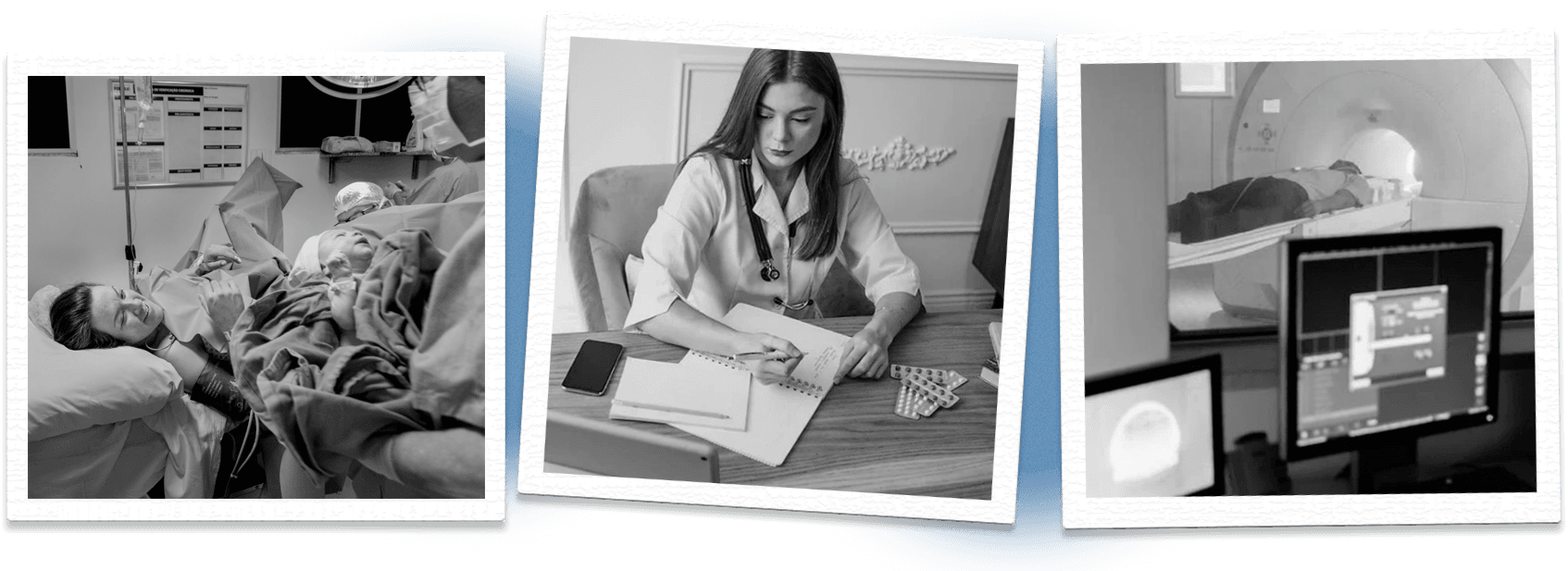

Uncertainty surrounds many of our daily choices. As we navigate this uncertainty, we often rely on a simple decision-making strategy called Win-Stay/Lose-Shift (WSLS) as a way of using our past experiences to guide our future decisions.
Healthcare professionals often use this same WSLS strategy when making high stakes decisions that affect patient outcomes. But WSLS can be a double-edged sword – sometimes improving outcomes (Bonawitz et al., 2014) and other times contributing to costly errors. How can we avoid mistakes due to WSLS while still allowing for its benefits?

What is “Win-Stay/Lose-Shift”?
Win-Stay/Lose-Shift (WSLS) is a strategy that humans often use when making decisions. If a choice leads to a positive result (e.g., driving one route gets us home quickly), we tend to repeat it in the future (win-stay). But if it leads to a negative outcome (e.g., lots of annoying delays), we switch to an alternative next time (e.g., try a new route; lose-shift). This decision strategy is very commonplace and is a foundational feature to how the human mind works.
Win-Stay/Lose-Shift can have negative consequences in healthcare
Although you might expect that healthcare providers wouldn’t use such simple strategies as WSLS, there’s growing evidence that WSLS shows up even in high stakes situations involving medical decisions. Let’s look at one example.

Physicians in delivery rooms make decisions between caesarean or vaginal delivery methods for each birth. Although these choices would ideally be informed solely by the needs and risks of the immediate patient, complications experienced by the preceding patient can influence this critically important decision in a WSLS manner (Singh, 2021). If the previous patient experiences complications during a caesarean delivery, the physician is more likely to switch to a vaginal delivery method for the next patient. Likewise, previous complications with vaginal delivery increase the chances of then switching to caesarean delivery.
Importantly, using a WSLS heuristic in this context is actually associated with a slight but meaningfully increased risk for negative health consequences (such as an increase in mortality, decrease in home discharge, and increase in follow-up outpatient visits). Physicians who use WSLS more show worse trends in patient outcomes over time.

In another example of WSLS in healthcare, physicians change their clinical testing practices based on their recent experiences. For example, following a serious adverse event stemming from a colonoscopy, physicians will temporarily decrease their colonoscopy rate (Keating et al., 2017). Meanwhile, following an injury report against their practice, physicians will temporarily increase advanced imaging rates (Ly, 2019). These two studies show how physicians will either increase or decrease their testing rates depending on the nature of a previous “loss”. Meanwhile, the “win” of successfully diagnosing a pulmonary embolism temporarily increases the rate of testing for pulmonary embolisms (Ly, 2021).
Increasing or decreasing clinical testing rates can each be either beneficial or detrimental to a patient’s well-being. On the one hand, reduced testing could result in missed opportunities for diagnosis and treatment. On the other hand, increased testing can impose undue economic, emotional (e.g., stress), and time burdens. More testing will also produce more false positives, leading to potentially unwarranted treatments and the associated financial, physical, and emotional tolls. Ideally physicians’ decisions about whether or not to forgo testing should be calibrated to these many costs and benefits.

The WSLS heuristic can also be observed in how medications are prescribed. For instance, following an adverse bleeding event associated with warfarin use (an anticoagulant), doctors significantly reduce their rate of prescribing warfarin overall (Choudhry et al., 2006). “Win-stay” also impacts prescriptions in that physicians often choose to continue prescribing drugs that have produced positive outcomes in the past even after newer, safer, and more effective drugs emerge on the market. As with our other examples, the use of WSLS in prescribing decisions could lead to negative health consequences for patients. If the risks associated with a medication are significantly lower than the risks associated with the condition it treats, then it is likely in the patient’s best interest to receive the medicine. Doctors’ reliance on WSLS could lead to prescribing behavior that does not reflect the real risk balance.
Mitigating the downsides of WSLS using behavior change techniques
So, what can be done to mitigate the potential adverse consequences of healthcare providers following a WSLS strategy? The answer is likely to differ based on the medical context.

In the case of drug prescriptions, an effective intervention for reducing reliance on WSLS might be to require physicians to document justifications for their prescription decisions. Inducing accountability in this way has been shown to reduce inappropriate antibiotic prescriptions (Meeker et al., 2016). Importantly, this intervention is likely to help address situations in which WSLS is being used absent-mindedly (e.g., due to distraction) by prompting people to refocus their available cognitive resources as well as situations where WSLS is being used deliberately, particularly if a physician is also asked to justify why an alternative treatment would not be better (Lord et al., 1984).
Meanwhile, requiring justification before acting is unlikely to be a good intervention in fast-paced hospital settings (e.g., delivery rooms) and may even lead to worse consequences than those from WSLS. Here, a decision aid such as a scientifically developed fast-and-frugal decision tree (Hafenbrädl et al., 2016) or a computer algorithm that offers quick, automated treatment recommendations may offer a more promising avenue.
It's worth considering here that, despite its potential downsides, WSLS is also an effective learning and choice strategy that has benefits. This means there may be healthcare settings where it’s valuable to preserve some amount of WSLS, such as clinical testing. Physicians who use WSLS here may adjust their testing rates to match shifts in a condition’s prevalence before the medical community becomes broadly aware of the change.
Conclusion
The influence of WSLS on healthcare decisions presents a unique challenge in improving patient outcomes. Employing tailored behavioral interventions can help address its negative impact. By understanding and managing WSLS, healthcare professionals can make more informed and beneficial decisions for their patients.
References
Bonawitz, E., Denison, S., Gopnik, A., & Griffiths, T. L. (2014). Win-Stay, Lose-Sample: A simple sequential algorithm for approximating Bayesian inference. Cognitive Psychology, 74, 35–65. https://doi.org/10.1016/j.cogpsych.2014.06.003
Choudhry, N. K., Anderson, G. M., Laupacis, A., Ross-Degnan, D., Normand, S.-L. T., & Soumerai, S. B. (2006). Impact of adverse events on prescribing warfarin in patients with atrial fibrillation: Matched pair analysis. Bmj, 332(7534), 141–145.
Hafenbrädl, S., Waeger, D., Marewski, J. N., & Gigerenzer, G. (2016). Applied Decision Making With Fast-and-Frugal Heuristics. Journal of Applied Research in Memory and Cognition, 5(2), 215–231. https://doi.org/10.1016/j.jarmac.2016.04.011
Ivan, V. E., Banks, P. J., Goodfellow, K., & Gruber, A. J. (2018). Lose-Shift Responding in Humans Is Promoted by Increased Cognitive Load. Frontiers in Integrative Neuroscience, 12. https://www.frontiersin.org/article/10.3389/fnint.2018.00009
Keating, N. L., O’Malley, A. J., Onnela, J.-P., & Landon, B. E. (2017). Assessing the impact of colonoscopy complications on use of colonoscopy among primary care physicians and other connected physicians: An observational study of older Americans. BMJ Open, 7(6), e014239.
Lord, C. G., Lepper, M. R., & Preston, E. (1984). Considering the opposite: A corrective strategy for social judgment. Journal of Personality and Social Psychology, 47(6), 1231.
Ly, D. P. (2019). Rates of Advanced Imaging by Practice Peers After Malpractice Injury Reports in Florida, 2009-2013. JAMA Internal Medicine, 179(8), 1140–1141. https://doi.org/10.1001/jamainternmed.2019.0163
Ly, D. P. (2021). The influence of the availability heuristic on physicians in the emergency department. Annals of Emergency Medicine, 78(5), 650–657.
Meeker, D., Linder, J. A., Fox, C. R., Friedberg, M. W., Persell, S. D., Goldstein, N. J., Knight, T. K., Hay, J. W., & Doctor, J. N. (2016). Effect of behavioral interventions on inappropriate antibiotic prescribing among primary care practices: A randomized clinical trial. Jama, 315(6), 562–570.
Singh, M. (2021). Heuristics in the delivery room. Science, 374(6565), 324–329. https://doi.org/10.1126/science.abc9818